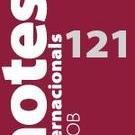The Russian economic crisis of 2014-15 has dramatically affected cross-border trade among the three central states of the Eurasian Economic Union (EEU), Belarus, Kazakhstan, and Russia (all of which are also members of the EEU’s Customs Union, or CU). For many entrepreneurs, the volatile Russian currency and prices have been a disadvantage. For others, the absence of customs controls between CU members has opened a wide range of opportunities. What has been the impact of the 2014 “war of sanctions” on trade within the EEU? What effects did the devaluation of the ruble have? Who were the winners and the losers in these changing trade dynamics?
“Belarusian” Tangerines
In response to Western sanctions, Russia introduced an embargo in August 2014 against dairy products, meat, and produce from Australia, Canada, the EU, Norway, and the United States.1 Neither Belarus nor Kazakhstan joined the embargo, however, creating opportunities for entrepreneurs to bring goods to Russia via these two states. Belarus is situated perfectly for shadow trade in EU goods, and the long Russia-Kazakhstan border also provides transit opportunities.
Soon after the start of the embargo, the Russian government launched negotiations with Belarus to limit illicit border trade. While Belarusian officials have repeatedly promised to cooperate with Moscow, Minsk has not stopped the transit flow, which offers significant gains to Belarus’ economy.
Belarusian traders employ various legal and illegal schemes to get goods into Russia. The main method involves concealing the true origin or destination of products. The embargo allows products to be brought into Russia if they are processed in countries not targeted by the Russian sanctions; Norwegian salmon salted and packed in Belarus, for instance, becomes “Belarusian” and legal to sell in Russia. However, some Belarusian entrepreneurs have simply repackaged goods and stamped them with a “Belarusian” label, leading to a proliferation of “Belarusian” salmon, oysters, and tangerines, none of which could actually come from Belarus. Some traders use even more blatantly illegal transit schemes, bringing banned foodstuffs into Russia under the false pretense that their end destination is Kazakhstan.
Permeable Borders and New Quasi-Controls
The transit of banned goods via Belarus and, to a lesser extent, Kazakhstan has become a serious challenge to the very existence of the EEU Customs Union. While Russia has been eager to close loopholes and illicit activity that undermine the embargo, Belarus and Kazakhstan have been reluctant to take any costly measures, particularly given what they perceive as unilateral confrontationist policies on the part of Moscow.
Since restoring formal customs controls at its borders with Belarus and Kazakhstan would mean the de facto termination of the CU, Russia has decided to introduce quasi-customs controls that may not violate the rules of the CU but contradict it in spirit. This is most evident in the fact that the Federal Service for Veterinary and Phytosanitary Supervision (Rosselkhoznadzor) and not the Federal Customs Service was charged with supervising the border trade with these two states, allowing for import checks that would otherwise be impermissible.
Until the end of November 2014, such quasi-customs controls were uneven and not very successful. Rosselkhoznadzor tried to monitor Belarusian and Kazakh agricultural companies and even blacklisted some of them. In November, Rosselkhoznadzor representatives estimated that roughly 20 percent of Belarusian foodstuffs “exported” to Kazakhstan via Russia were part of fake transit schemes.2 The head of the Federal Customs Service, Andrey Belianinov, claimed that the export to Belarus of foodstuffs banned by Russia had increased 80 percent as compared to the same period a year before.3
Subsequently, Rosselkhoznadzor tried tightening controls. In the latter half of November, it introduced full inspections on all foodstuffs coming from Belarus. It also banned the transit of foodstuffs between Belarus and Kazakhstan via Russia. These strict measures provoked displeasure in Minsk, and Belarusian President Aleksandr Lukashenko condemned them as unfair and indecent. In December, Belarus began to systematically check all Russian trucks, and it informally tightened controls over the transit of Russian goods from the exclave of Kaliningrad to the rest of Russia. Belarusian authorities even confiscated (and sold) a shipment of household appliances and consumer electronics worth several million dollars, under the pretext that Russian entrepreneurs were dealing in counterfeit Chinese goods within the EEU.
Russia introduced more customs controls at the end of February 2015 at its borders with Belarus and Kazakhstan. The Federal Transportation Inspection Service (Rostransnadzor) opened inspection checkpoints to make sure that cargo carriers were operating to Russian standards and had the correct permissions and certificates. Concurrently, Moscow tried to persuade Minsk to agree to jointly monitor Belarus’ borders with the EU and Ukraine, but this was met with a lukewarm response by Minsk, which called for symmetric measures at border crossings between Russia and Kazakhstan and non-EEU members.
Overall, Moscow’s unilateral measures have not been very successful. Checkpoints can be readily bypassed by private individuals and vehicles. They are also not equipped to identify banned items that have been repackaged and relabeled in Belarus or Kazakhstan.
Ruble Devaluation and Cross-Border Trade
From October 2014, the Russian ruble experienced a noticeable decline. By mid-December, it had lost one third of its value. The devaluation opened great opportunities for border residents of Belarus and Kazakhstan. They could spend a relatively small amount on a trip to Russia, buy inexpensive goods, and sell them at home without having to deal with customs duties and controls. By mid-December, the media was reporting huge lines in many supermarkets in Russian cities close to Belarus and Kazakhstan.
Cars and home appliances – and even apartments – were among the best-selling items. According to some estimates, consumers from Belarus and Kazakhstan bought about 18 percent of all cars sold in Russia in November and December.4 Increased traffic congestion was reported at Russian-Kazakh border checkpoints. Some ethnic Russian citizens of Kazakhstan who had wanted to relocate to Russia but lacked money to buy an apartment were now able to do so. There were, of course, some instances of fraud, particularly in the auto market, with reports of people buying stolen cars and others simply cheated by dealers.
Increased cross-border shopping activity also helped many Russian retailers survive the peak of crisis. In particular, it offered a unique chance to small Russian retailers operating in areas bordering Belarus and Kazakhstan to increase their sales dramatically.
The cross-border bonanza slowed in January 2015 due to the Russian ruble’s appreciation and growth in retail prices of cars, home appliances, and other goods. While the flow of buyers from Kazakhstan still remained significant, the flow from Belarus decreased dramatically: the Belarusian national bank dealt with the substantially increased demand for foreign currency by introducing a 30 percent tax on the purchase of foreign currencies. The tax was abolished by the second week of January, but by then the value of the Belarusian ruble had dropped 20 percent, partially leveling price differences and decreasing the profitability of the cross-border trade.
Still, following the ruble’s devaluation, Russian goods became highly competitive in both Belarusian and Kazakh markets, at the expense of domestic producers and retailers. Belarus was better protected against an uncontrolled influx of Russian goods thanks to its more centralized economy. Kazakh producers and retailers were more seriously damaged. From January to March 2015, automobile sales in Kazakhstan fell by more than a quarter.5 Producers and sellers of foodstuffs, fuel, building materials, and other products also experienced large losses. As a result, some influential business associations lobbied for a temporary restoration of customs controls with Russia or an embargo on certain Russian goods; there was also discussion of a devaluation of Kazakhstan’s own currency. While Astana did not want to spoil relations with Moscow by introducing decisive measures, in March it introduced temporary restrictions on the import of certain fuels and tightened “sanitation” controls over Russian meat and dairy products. While these measures were partial and temporary, Astana could eventually decide that more resolute responses are necessary.
Conclusion
Trans-border economic activities are highly sensitive to price and supply differences. The Russian food embargo and subsequent devaluation of the ruble exacerbated such differences between Belarus and Kazakhstan, on the one hand, and Russia, on the other. The ensuing cross-border trade, Russia’s attempts to control it, and reciprocal responses by Belarus and Kazakhstan have put a strain on the EEU. This has led to more open conflict between Russia and Belarus but also complicated Russian-Kazakh relations.
In the end, the balance sheet of winners and losers is not clear-cut. Those who managed to establish transit trade by semi-legal or illegal means have been the greatest winners, together with consumers who managed to secure serious bargains in the first months after the devaluation. By comparison, most of those who have continued to engage in legal trade have at best enjoyed marginal gains. At worst, they have incurred serious losses, thanks to the reduction of profit for Russian producers and suppliers and the decline in competitiveness of Belarusian and Kazakh goods on the Russian market.
Serghei Golunov is Professor at Kyushu University in Japan.
[PDF]
1 For more on the impact of the embargo on EU-Russia trade, see: Serghei Golunov, “The Grey Trade of the EU-Russia Borderlands: Economic Obstacle or Opportunity?” PONARS Eurasia Policy Memo No. 360, March 2015.
2 Marina Magay, “Rossiya ogranichila transit produktov iz Belorussii iz-za reeksporta,” RBC.ru, November 24, 2014, http://top.rbc.ru/business/24/11/2014/547265cacbb20fa9cc00998d
3 “FTS zaiavila o rezkom roste postavok sanktsionnyh tovarov v Belorussiyu,” Interfax.ru, November 27, 2014, http://www.interfax.ru/business/409729
4 Roman Asankin, “Bolee 15 tys. prodannyh v yanvare mashin ne bylo postavleno na uchiot v GIBDD,” RBC.ru, March 3, 2015, http://top.rbc.ru/business/03/03/2015/54f5be689a7947408fc63acd
5 “Ofitsial’nye prodazhi avtomobiley v Kazahstane v pervom kvartale snizilis’ na 27,3%,” Novosti-Kazahstan, April 10, 2015, http://newskaz.ru/economy/20150410/7832569.html










